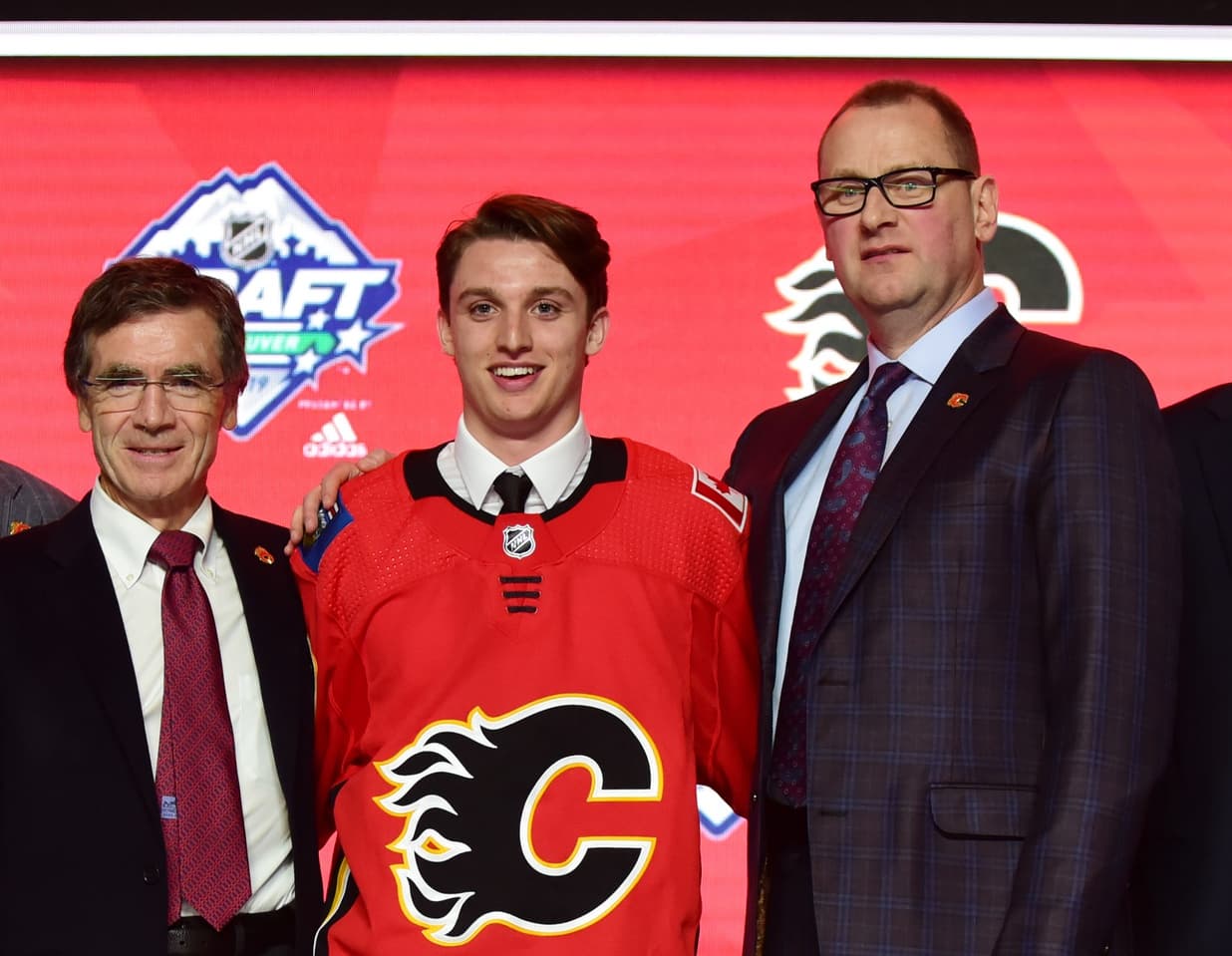Top Prospect Contender: Jakob Pelletier

By Ryan Pike
4 years agoIn a way, Jakob Pelletier both benefits from and is hurt by recency bias as a prospect. The team’s most recent first round selection, he’s the shiny new toy. He had a really good post-draft season, playing key minutes on one of junior hockey’s best teams. But coming after the likes of Sean Monahan, Matthew Tkachuk and Sam Bennett, is he on track to be a needle-mover at the NHL level?
A brief history
Originally from Quebec City, Pelletier was the third overall pick in the QMJHL’s 2017 Entry Draft. He had 61 points in 60 games in 2017-18 as a rookie, getting named to the league’s All-Rookie Team. The following season he had 89 points in 65 games, leading to him getting drafted 26th overall by the Flames in the 2019 NHL Draft.
The case for Pelletier
Pelletier is a smaller player that doesn’t play like a smaller player. Listed at 5’9″ and 170 pounds, Pelletier’s contemporaries have trended towards being speedy finesse players who use speed along the perimeter to generate offense. They’re used primary in offensive roles.
Pelletier? Well, he doesn’t play like that. He plays between the dots a lot and tends to drive right at the opposition rather than try to zip around them. It’s worked really well at the QMJHL level, as his two-way smarts have allowed Moncton’s coaching staff to throw him into basically any in-game situation. He’s the type of player that coaches (and GMs and scouts) love: competitive as hell, smart in both ends of the ice, and tremendously talented with the puck.
Pelletier was 10th in the Q in scoring despite missing some time. He only missed out on a potential World Juniors spot on Team Canada due to an injury right before selection camp.
The case against Pelletier
While Pelletier is a very smart hockey player, there’s a question as to whether he can translate his playing style to the pro level. His effectiveness relies on mobility, fearlessness and speed, and while he can zip around junior defenders with ease it’s unclear if he can make it work in the AHL or NHL where everyone’s fast, smart and gigantic. (I’d expect him to get a long, long look in 2020’s pre-season as the Flames development staff tries to map that part of his growth out.)
The other knock is his size. He’s small and he’s always going to be small. And while he’s figured out a way to make it work in the Q – where he’s one of the most dynamic and productive players at that level of hockey – can he sustain it? And can he do so while avoiding injury? His production dipped after he returned from a mid-season concussion – part of that was usage changes as Moncton added some scoring depth, but some of that had to have been trying to keep Pelletier in tip-top condition for a playoff run.
Recent articles from Ryan Pike




